Here are some of my favorite shade-tolerant fruits and vegetables. The perennials are especially adept at sharing root space with trees, as long as you give them a 3- to 5-inch-thick bed of topsoil the first year. And the annuals will flourish beneath trees, as well, if grown in a raised bed set on landscape fabric, which keeps the tree roots at bay.
Ostrich fern

Name:Matteuccia struthiopteris
USDA Hardiness Zones: 2 to 8
Size: 2 to 6 feet tall and 3 feet wide
Shade tolerance: Prefers at least two hours of dappled sunlight
Soil conditions: Rich, consistently moist soil
Also called fiddlehead fern, ostrich fern is native to the soggy woodlands of Canada and the eastern United States. All ferns produce fiddleheads before their leaves unfurl, but other species are too dry and papery to be palatable. I know—I’ve tried them. In early spring, harvest the tightly curled fiddleheads along with a 3-inch length of stalk, keeping in mind that taking more than a third of the fern’s fiddleheads will weaken the plant. You can eat fiddleheads raw, but they taste best sautéed in butter.
Beet

Name:Beta vulgaris cvs.
Zones: Annual
Size: 12 to 18 inches tall and 18 to 24 inches wide
Shade tolerance: Requires at least four to five hours of sun; performs best in full sun
Soil conditions: Highly organic, moist, well-drained soil
The types of vegetables that grow best with scant sunlight are those that don’t produce fruit or pods; roots and leaves have priority when plants parse out resources. If beets receive four to five hours of sunlight a day throughout the long growing season, they’ll produce a good crop. They may not fill out as well as root crops in full sun. But baby vegetables are all the rage these days, so market them as such when serving.
Pawpaw
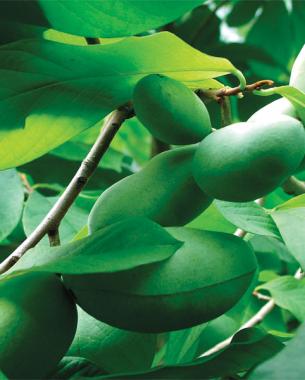
Name: Asimina triloba and cvs.
Zones: 6 to 8
Size: 20 feet tall and wide
Shade tolerance: Prefers at least two hours of dappled sunlight
Soil conditions: Prefers rich, moist soil
You won’t find pawpaw fruit at the supermarket because it’s too soft to ship cross-country, but it makes a tropical-tasting, late-summer treat for gardeners. Native to the shady floodplains of the eastern United States, the pawpaw tree is generally pest-free and adaptable to a wide range of growing conditions. Planting more than one tree improves pollination and fruit set. Two of the best-tasting cultivars are ‘Sunflower’ and ‘Mango’.
Leaf lettuce
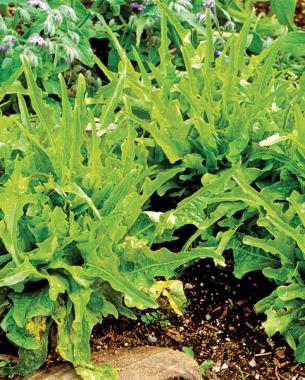
Name: Lactuca sativa cvs.
Zones: Annual
Size: Up to 1 foot tall and wide
Shade tolerance: Requires at least three to four hours of sun; performs best in full sun
Soil conditions: Organic, moist, well-drained soil
In summer, my farmer friends stretch shade cloth over their leaf-lettuce crops to keep them from scorching in the sun. So consider yourself lucky if your shade trees are already protecting your crops from catching too many rays. With only three to four hours of sunlight, leaf lettuce can produce multiple crops without bolting too quickly. Check your plants daily for slug and snail damage, and if necessary, hunt slugs at night with a headlamp.
Alpine strawberry

Name:Fragaria vesca and cvs.
Zones: 5 to 9
Size: 6 to 9 inches tall and 9 to 12 inches wide
Shade tolerance: Requires at least five hours of sun
Soil conditions: Fertile, sandy, well-drained soil
Many seed catalogs say that alpine strawberry thrives in full sun. In my experience, however, afternoon shade helps it survive summer’s dry spells. The red fruit is, of course, attractive to birds. But don’t use bird netting—I’ve seen it snag and kill wildlife. I use, instead, snake-lookalike balloons. They’re available at most garden centers, and they keep birds away if you move them every other day—which also happens to make a good harvesting schedule.
Rhubarb
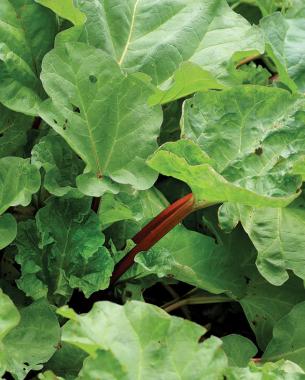
Name:Rheum rhabarbarum
Zones: 3 to 7
Size: 2 to 3 feet tall and 3 to 4 feet wide
Shade tolerance: Requires at least five hours of sun
Soil conditions: Rich soil with plenty of mulch and steady moisture
In regions warmer than Zone 5, rhubarb needs afternoon shade to stay alive through summer. The stalks and flower buds of rhubarb are edible, but its leaves are highly poisonous. When harvesting, twist off only a third of the stalks, otherwise you risk overtaxing the plant.
American black currant

Name:Ribes americanum
Zones: 3 to 6
Size: 3 to 5 feet tall and wide
Shade tolerance: Requires at least three to four hours of sun
Soil conditions: Rich, moist soil
Most fruiting bushes and brambles can tolerate half a day of shade, but few
produce as well in shade as American black currant. This shrub is, strangely, more popular in Europe than it is in the United States, but perhaps shade gardeners will change that. American black currant is more disease resistant than European varieties; it doesn’t need trellising; and it is self-fertile, which means you only need one plant to get fruit.

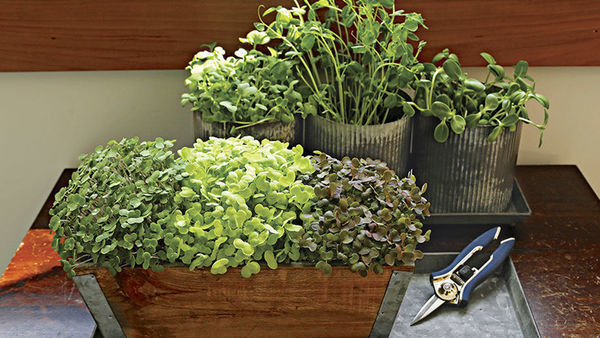

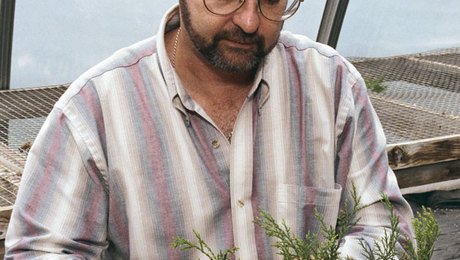
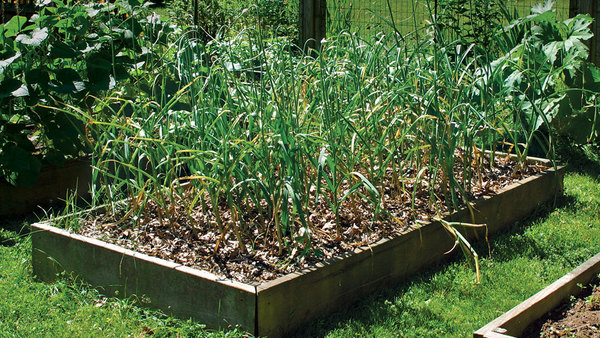












Comments
Poorly written article and misleading title. Most of these require 3-5 hours of sun, so they can't be grown in shade.
Well, I agree to a point but the snarky attitude from both you and the author is just plain bad manners. You should not have called it "poorly written" because it clearly wasn't and he should have responded more patiently.That said, they technically do grow shade (if you're a horticulturist; it is not full sun), but you're right in that it is not full shade. The title should reflect partial shade and it clearly does not.
From the writer: Everyone is welcome to their opinion, but you can't have your own facts. If you have 3-5 hours of sun, then in summer your plants in fact are in shade for 10-12 hours (depending on latitude). And a dozen national editors seem to like my "poorly written article(s)". Hope 2017 is a better year for you! :-)
What zones are annual? I'm not sure how a zone fits into an annual category. I'm not a big gardener (I've done it but not much) so it is obviously something I need to learn. I've never heard of that. On a personal level, I'm in Zone 8/9, depending on what chart you are looking at, I'm in one or the other so I must be on a cusp or something. I never know which zone I should be looking at.
I have rhubarb growing in a spot that gets no direct sun. It doesn't produce well but it is also in un-amended soil under spruce trees. I'm going to extend it into the nearby garden bed because I have a 16' by 16' triangle of deep shade that I want to garden. With fertile soil, I hope it will produce better.
Log in or create an account to post a comment.
Sign up Log in